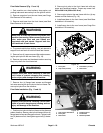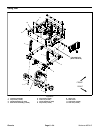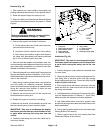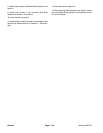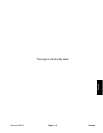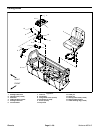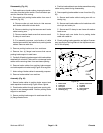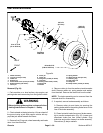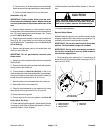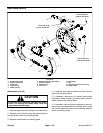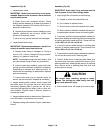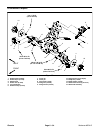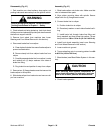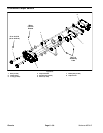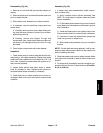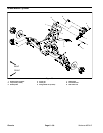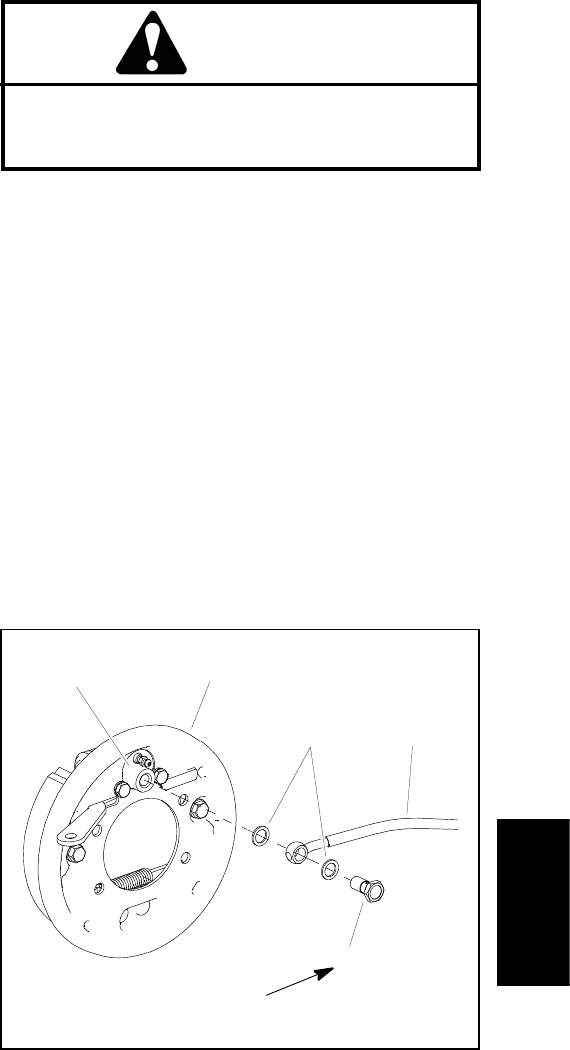
Workman MDX--D Page 6 -- 31 Chassis
C. Remove four (4) socket head screws and f lange
nuts that secure thebrake assembly to thetransaxle.
D. Remove brake assembly from the transaxle.
Installation (Fig. 24)
IMPORTANT: Parking brake levers must be posi-
tioned above the transaxle mount. When positioned
correctly, brakel ever willpointtoward therearof the
axle.
1. Position brake assembly to the transaxle. Secure
backing plate of the brakeassemblyto thetransaxlewith
four (4) socket head screws and flanged nuts. Torque
screws to 20 ft-- lb (27 N--m).
2. Position newbanjo washer on each side ofbrake line
fitting (Fig. 25). Insert banjo bolt into fitting and thread
into wheelcylinder. Torque banjo bolt from 15 to21 ft--lb
(21to28N--m).
3. Secure parking brake cable to the brake lever with
clevis pin and cotter pin.
IMPORTANT: Do not get antiseize lubricant onto
brake shoes.
4. Apply light coat ofantiseize lubricant to the transaxle
shaft splines.
5. Secure wheel hub to thetransaxle shaft with washer,
spring washer and castle nut.
6. Torque castle nut 120ft--lb(163N--m).Ifslotinnut
does not alignwithhole intransaxle shaft,continuetight-
ening nut to align next slot with hole in shaft. Castle nut
torque should not exceed 200 ft--lb (271 N--m).
7. Secure castle nut to transaxle shaft with cotter pin.
8. Slide brake drum onto wheel hub.
9. Position wheel assembly to the machine with valve
stem facing out and secure with five (5) lug nuts.
10.Lower machine to ground.
11.Torque lug nuts in a crossing pattern from 80 to 90
ft--lb (109 to 122 N--m).
12.Check parking brake operation. Adjust parking brake
if necessary (see Parking Brake Adjustment in the Ad-
justments section of this chapter).
13.Bleed brakes (see Bleed Brake System in this sec-
tion).
CAUTION
After servicing brake system components, al-
ways check the brakes in a wide open, level area
that is free of other persons and obstructions.
14.Check brake operation.
Burnish Brake Shoes
Sintered metal linings may not provide maximum brake
stopping distance after brake shoes are replaced. It is
necessary to burnish new brake shoe linings.
IMPORTANT: Do not drive machine with the brakes
applied. The brake shoe linings will overheat.
IMPORTANT: During brake burnishing procedure,
do not allow the brakes to lock up. Allow brakes to
cool between applications.
1. Drive machine while making 6 to 7 normal stops at
about 200 ft (60 m) intervals while traveling a t 10 to 15
mph (16 to 24 KPH).
Figure 25
5
4
1
2
3
15 to 21 ft--lb
(21to28N--m)
1. Brake assembly
2. Wheel cylinder
3. Banjo washer
4. Banjo bolt
5. Brake line
Chassis



